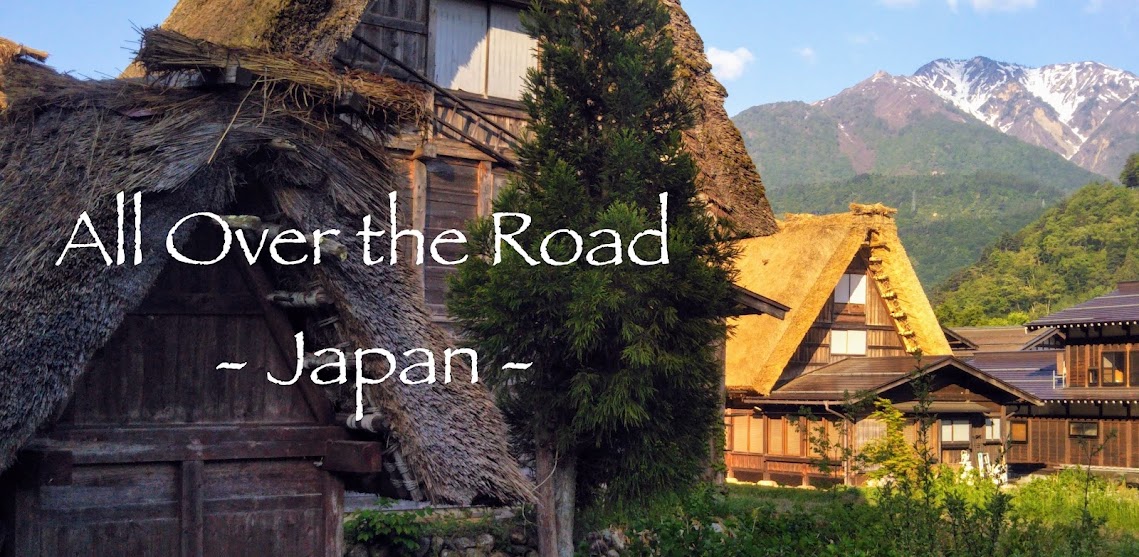I'm trying to come up with a lofty philosophical phrase to encapsulate what I saw the other day.
And I am failing miserably.
Along one of Matsumoto's million back streets is a shrine that manages to look like a dolled-up woman waiting nervously for her date to show. I've biked past this shrine at least a hundred times, in each direction, cycling to and from downtown, but until last week I never once stopped or even slowed down to check it out.
It stands in the shadows, set behind a remarkable tree whose stout, gnarled trunk makes it look like something out of a Grimm Brothers tale - or, for those living in this century, a Harry Potter movie. Out front a vermillion-painted bridge arches gracefully over a small cement pond. A smooth stone walkway leads to a stone torii gate, much more Disney than gruesome fairy tale. A short set of stairs leads to a lacquered donation box and the latticed doors of this one-room god-apartment.
Next to that ancient, lordly tree it all looks new and neat and utterly uninspiring.
Years ago, when I was much more a stranger in this strangely wonderful land, I would have stopped at this shrine the first time I noticed it. I would have gazed in stupid awe, not knowing what any of it meant but loving it all just the same. The new and the strange; the mysterious and unknown; this was what I'd come here for.
In the past two decades I've seen countless gates and vermillion bridges and sacred structures big and small, and have yet to grow tired of any of it. Yet there's no denying the dullness that familiarity breeds. Gazing in stupid awe can get old.
Thanks to a semi-career as a tour guide, I've taken to trying to figure things out.
With a bit of time and mental sweat I can usually figure out the elegant Japanese brush strokes telling the story of the shrine (or temple or stone or tree) standing timelessly before me. It turns out that this nondescript little shrine, sitting in the shade of old man tree, has been here, in one form or another, since at least the 9th Century.
It is actually not known when Tsuki-izumi Jinja was established. The earliest mention of it is in the "Sandai Jitsuroku" written in the 5th year of the Gangyo Era (881AD). Back then this shrine was apparently a much larger and more elaborate affair, used for rituals and ceremonial purposes and, possibly, as a place to meet your date. The shrine stood within a large forest, near a natural spring that has flowed continuously up from its subterranean source for over a millennium.
We are further told that for a time government roads (whatever that may mean) were built to pass by this shrine. Common folk as well came here to pray, and to avail themselves of the eternally-flowing water. The deity of the spring waters, Gyoi-no-kami (御井の神), is, predictably, one of the gods enshrined here in Tsuki-izumi Jinja.
You can find sparkling clean spring water flowing up from underground all over downtown Matsumoto. The water here, though, might have been something special as it was this part of town that was named Shimizu (清水), meaning 'pure water'.
That big, gnarled old tree, by the way, is a keyaki (欅), or Zelkova tree. It measures 20 meters tall, is a Matsumoto City Special Natural Monument, and looks like it has been around about as long as the shrine itself. Unfortunately the sign doesn't give any indication. As a sort of consolation there is the following sentiment:
「まだ知らぬ人を恋うれば信濃なる清水の里に袖ぞぬれける」which means, I think, "If you fall in love with someone you have not yet met you'll wet your sleeves (i.e. wipe your tears on your sleeves) in Shimizu."
Which is certainly not the lofty philosophical phrase I am looking for. But it does encapsulate the sense that no matter how long I live here, and how many shrines I visit, no matter how many signs I read or how much I might eventually learn, there will always be that element of mystery here, leaving me to gaze forever in stupid, wonderful awe.


